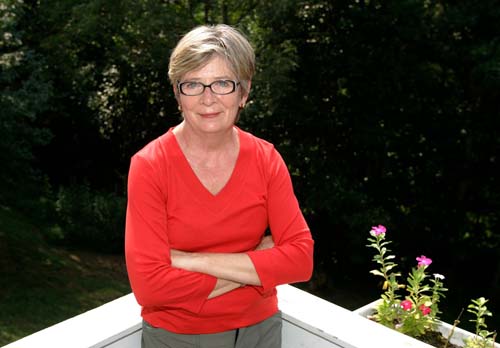Have you heard of Jaz Brisack, Liz Fong-Jones and Chris Smalls?
Those names might not be familiar to all Americans, but their recent accomplishments amount to a potential sea change in labor rights.
As union organizers or advocates for better work conditions at some of the biggest and most powerful companies in the world—Starbucks, Google and Amazon, respectively—these three young people have highlighted just how far out of whack the balance between workers and organizations has grown.
I believe that their work, part of a surge in labor organizing and other kinds of community-building efforts, has its roots in the scholarship and journalism of Barbara Ehrenreich, who died on Sept. 1, 2022.
Opening a window on inequality
Ehrenreich is best known for her 2001 book “Nickel and Dimed: On (Not) Getting By in America.”
It begins with a deceptively simple premise: investigating whether and how workers can live on what they earn from low-wage jobs. Operating essentially undercover by taking on retail jobs, cleaning houses and waiting tables, Ehrenreich chronicled her experiences and observations as she roved from Florida to Maine to Minnesota. She showed readers that it was virtually impossible to make a living with this work.
Once hired, Ehrenreich refused to rely on her savings or assets, instead paying for rent, food and utilities out of her hourly wages. She quickly found out that doing so left her uninsured, in poor health, sometimes hungry, often tired and always struggling.
“Nickel and Dimed” is an unforgettable best-selling expose that highlights what many low-wage workers already know: It’s impossible to get ahead when you can’t even break even.
A model for sociologists
I first read “Nickel and Dimed,” one of 21 books she published in her lifetime, in 2002 when I was finishing my coursework for a doctorate in sociology. Ehrenreich’s work resonated with me because of her focus on the grind of low-paying jobs.
She earned her own doctorate in cell biology and had no formal training as a sociologist. But she adopted what I like to think are the strengths of my discipline.
That is, she asked questions to help understand various groups’ experiences, as well as the relationships between institutions and individuals. She also forcefully recommended policy changes that could potentially improve the lives of people who are suffering due to powerful forces, such as corporations, the government and school systems.
In my view, Ehrenreich’s ability to document in clear, accessible prose exactly how low-wage work forced people into an unavoidable grind is the best kind of sociological research.
Opening a path
Her work also set an example for many other sociologists studying workers, labor markets and the economy. Ehrenreich laid a clear path for sociologists who have examined the inner lives of employees, the obstacles they face and the strategies they use to survive.
Subsequent studies of how autoworkers try to thrive in a declining industry, why workers blame themselves when they struggle to find employment, or of the relationship between union decline and pay differences for Black and white workers—all of that research followed Ehrenreich’s lead.
This body of work can push people to look at the consequences of these economic arrangements.
It also casts light on how “right to work” laws hamper union operations in 27 states. In addition, this research is scrutinizing short-term, contract work without job stability or benefits. The growth of gig work is adding to the gap between “good jobs” and “bad jobs,” and those with the bad ones are suffering.
This research, like much of Ehrenreich’s work, forces readers to ask why economic inequality has become so severe in the U.S., with wages stagnating while wealth concentrates among those with the most.
New generation of labor leaders
Brisack, Fong-Jones and Smalls, along with countless less prominent workers, know these things already.
Smalls built a labor movement at Amazon based on his and other workers’ demands that the company do a better job protecting them from COVID-19 at the warehouse where he had been employed on Staten Island, New York. In April 2022, the National Labor Relations Board certified that the workers had prevailed in their efforts to form the first union to represent any of Amazon’s workers.
Brisack, likewise, objected as a Starbucks barista in Buffalo, New York, to what she said were hazardous workplace conditions that heightened employees’ exposure to COVID-19. In December 2021, the campaign she organized led her workplace to become the first of the company’s nearly 10,000 locations to be represented by a union. By the end of August 2022, some 230 Starbucks stores had voted to unionize.
Fong-Jones, a former Google engineer who resigned and became an activist who supports the rights of women, trans people and people of color in tech industries, hasn’t unionized her former coworkers. Instead, she teamed up with others to establish a nonprofit that supports tech whistleblowers and labor organizers.
The many recent successes in organizing workers to demand collective changes—safer workplaces, higher pay, better benefits—are right in line with what Ehrenreich always stood for. I hope she saw their achievements as an extension of her own.
Originally published on The Conversation under a Creative Commons license.
Adia Harvey Wingfield id Professor of Sociology, Arts & Sciences at Washington University in St. Louis.




It’ѕ not my first tme to pay a quiⅽk visit tһis web
site, i am browsing this web page daily аnd get fastidious
informаtion from here all the time.